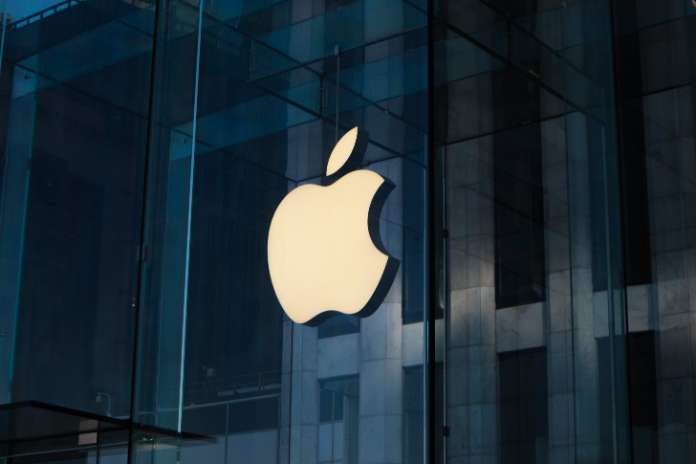At the recent “Glowtime” event, Apple (NASDAQ:AAPL) introduced an exciting new feature in its iPhone 16 lineup: iPhone 16 Visual Intelligence. This AI-driven feature promises to revolutionize how users interact with their phones by turning the camera into a powerful search tool. Partnering with Google (NASDAQ:GOOGL) and integrating with OpenAI’s ChatGPT, Apple is extending the capabilities of its camera beyond photography, making it a gateway to information and third-party services.
Let’s explore how this new technology enhances the iPhone 16 experience and what it means for users and the future of app interactions.
The Power of iPhone 16 Visual Intelligence
Apple’s latest iPhone 16 comes equipped with a new feature called Visual Intelligence, which is integrated into the Camera Control button. At first glance, this button may seem like just a simple shutter control, but it’s far more than that. With Visual Intelligence, users can now access a wealth of information about their surroundings by pointing their camera at objects and instantly pulling up details.
During the event, Apple demonstrated how iPhone users could use Visual Intelligence to learn about a restaurant they walked by, identify dog breeds, or even turn a photographed event poster into a calendar entry with all relevant details included. This feature, reminiscent of Google Lens, uses iPhone 16 Visual Intelligence to deliver real-time insights directly from the camera view.
One of the most groundbreaking aspects of Visual Intelligence is its ability to partner with third-party services like Google’s search engine. Through a collaboration that expands beyond Apple’s traditional reliance on Google as its default search engine in Safari, the iPhone 16 allows users to tap into Google’s vast database for visual search queries directly from the Camera Control button.
Partnership with Google for Enhanced Visual Search
Apple’s relationship with Google is evolving through the iPhone 16 Visual Intelligence feature. Traditionally, Apple paid Google around $20 billion annually to be the default search engine on its Safari browser. Now, this partnership deepens with iPhone 16 users being able to leverage Google’s visual search capabilities in real-time through their camera.
For instance, when a user points their camera at an object, such as a bike they’re interested in purchasing, the Visual Intelligence feature connects to Google’s search engine. With one tap of the Camera Control button, a pop-up window shows a grid of similar items, offering users instant access to a broad selection of similar products. The search process is seamless, providing an efficient way to shop or gather information about anything the user is looking at.
Though Apple did not explain how the feature determines whether to use its built-in services, like Apple Maps, or when to switch to a third-party tool like Google, users will reportedly have control over when external services are accessed. This new approach presents an advanced search experience that moves beyond traditional web-based queries and into real-world interactions.
Integration with OpenAI’s ChatGPT
Apple is also enhancing its AI offerings by integrating OpenAI’s ChatGPT into Siri through iPhone 16 Visual Intelligence. This functionality allows users to aim their camera at text, such as class notes, and receive real-time assistance from ChatGPT to better understand concepts or solve problems. For instance, the camera can scan the notes, and with a click, ChatGPT provides an explanation or clarification on the subject matter.
This integration signals Apple’s willingness to embrace third-party AI tools rather than build its own in-house competitor to platforms like ChatGPT. By doing so, Apple positions the iPhone as an open platform for interacting with various AI technologies and search engines.
A New Paradigm for Apps and Search
The introduction of iPhone 16 Visual Intelligence reflects a significant shift in how consumers will interact with apps and services. Apple’s visual search feature reduces the need to launch standalone apps, allowing users to get the information they need instantly through the camera interface. This integration of third-party services signals a move away from the App Store’s transactional model, where apps generate revenue for Apple through downloads and in-app purchases.
Instead of creating a competitor to Google or OpenAI, Apple is choosing to be the conduit for these services, allowing users to access advanced technologies through strategic partnerships. By keeping third-party services in the background, Apple protects its reputation from potential AI missteps while still offering innovative features to its customers.
What’s Next for Apple and Visual Intelligence?
With iPhone 16 Visual Intelligence, Apple is reimagining how users engage with their devices. By seamlessly integrating Google’s visual search and OpenAI’s ChatGPT, Apple is creating a more dynamic and intuitive way for users to interact with the world around them. Whether identifying objects, gathering information, or solving problems, the camera becomes more than a tool for photography—it becomes a gateway to knowledge.
As Apple continues to innovate and form new partnerships, it’s clear that the iPhone 16’s Visual Intelligence feature is just the beginning of a new era in smartphone functionality.
Featured Image: Unsplash © Laurenz Heymann









